Leather, with its rich history and enduring appeal, is undeniably one of the most timeless materials. It’s not just a choice for creating stylish and durable clothing, shoes, bags, and accessories; it’s a symbol of craftsmanship and elegance.
By carefully following these steps, you can transform your leather treasures into artifacts that tell a story of their own. Embrace the art of aging leather and unlock a whole new level of style and sophistication.
What Is Aging Leather?
Aging leather is a meticulous process that involves treating the material to give it the appearance, texture, and even scent of a well-worn piece that has stood the test of time. This artful technique entails applying a series of special treatments and techniques to simulate the rich patina that develops over years of use and exposure. Through a combination of carefully crafted artificial methods and the natural aging process, the goal is to enhance the leather’s character and imbue it with a captivating rustic charm that adds an extra layer of allure to your leather goods.[1]
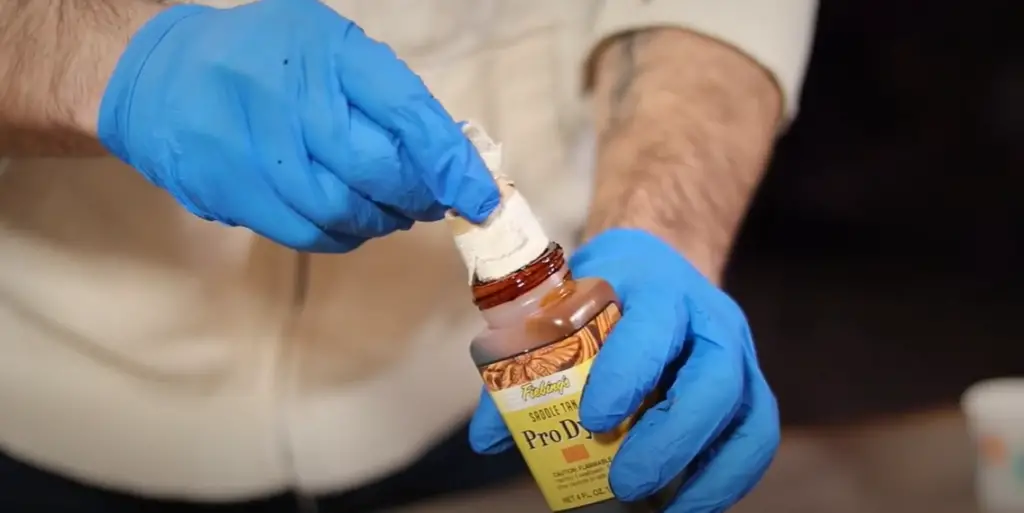
Is it that simple?
No. Achieving the desired aged look requires a great deal of care, attention to detail, and a meticulous approach. It involves understanding and appreciating the individual characteristics of each piece of leather, as no two are exactly alike. Patience is crucial as the aging process unfolds gradually, unveiling the unique beauty that emerges over time. To achieve the desired outcome, it is essential to select the right products and techniques, while avoiding harsh treatments that could potentially cause irreversible damage. By delicately navigating this process, one can ensure the preservation and enhancement of the leather’s character, resulting in a truly exquisite and timeless aesthetic.[1]
Reasons You Might Choose To Age Leather
The ageing process is a meticulous technique that allows you to achieve an authentic aged look, enhancing the charm and character of your leather goods without compromising their quality. Whether you desire to infuse depth and personality into a newly-purchased piece or rejuvenate a cherished item from yesteryears, aging leather offers a remarkable choice.
Moreover, aging leather presents an opportunity to infuse a personal touch into every item. Not only can you select the desired level of age-wear that resonates with you, but you can also customize it further by adding dyes or waxes with unique finishes and colors that reflect your individual style and creativity.
It’s important to note that ageing leather is an art form that requires time and patience. Rushing the process would undermine the essence of its beauty. By adopting the right approach and exercising a little patience, you’ll be rewarded with the exquisite and unmatched allure that comes with the passage of time for leather goods.[1]
Variations or Styles of Aging Leather
There are a few different ways to age leather, each of which produces its own unique results. The most common methods include using waxes, dyes, and oils, as well as exposing the leather to natural elements such as exposure to sunlight or rain.
The aging process begins by hydrating the leather with a specially formulated product; this helps to prepare the material for the treatments that will follow. Waxes, dyes, and oils are then used to impart an aged look and texture to the leather. For a more rustic aesthetic, the leather can be exposed to natural elements such as sunlight or rain for further distressing effects.
The key is to experiment with different techniques until you achieve the desired result. It is also important to note that the same age-wear treatment will look different on each piece of leather due to the unique characteristics and composition of every hide.[1]
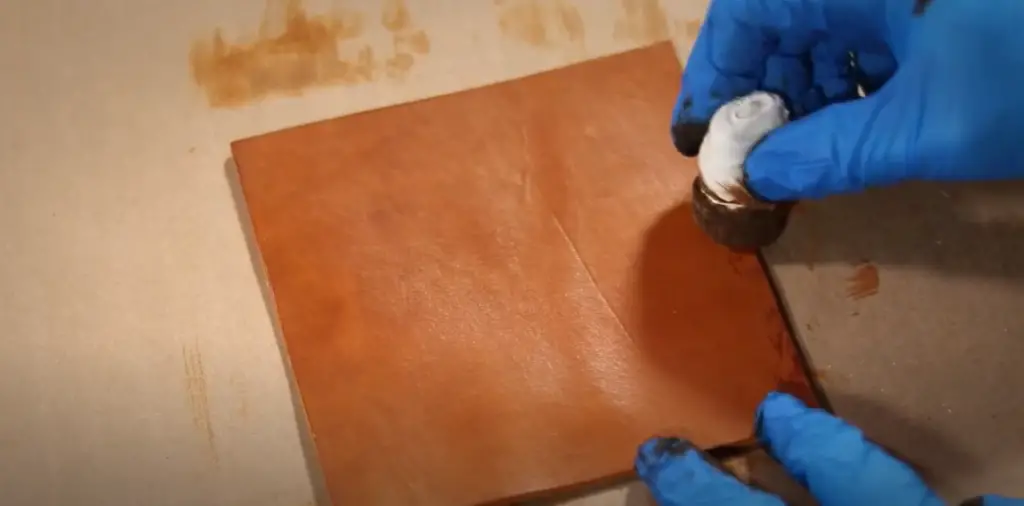
Skill Level of Aging Leather
Aging leather is not a one-size-fits-all process and the skill level required can vary greatly depending on the desired result. When starting out, it’s best to start with simple techniques that require minimal materials and tools. As you become more familiar with the basics of ageing leather, you can then move onto more complex treatments such as applying waxes, dyes, and oils or exposing the leather to natural elements.
By experimenting with different techniques and products, you can produce an array of stunning aged looks ranging from subtle patinas to heavily distressed surfaces. Regardless of your skill level, when it comes to aging leather, the key is to focus on mastering the craftsmanship and appreciating the nuances that come with the process. With patience and practice, you can create timeless leather goods that will last a lifetime.[1]
What is Patina?
Patina is the distinct change in color that occurs when an object or material has been exposed to natural elements over time. This can be seen on many objects, including leather goods. The patina of a piece of leather develops gradually and ephemerally, creating a unique look that cannot be replicated artificially. It adds an extra layer of depth and texture to the material, enhancing its character and charm.
Patina can manifest differently on each piece of leather, depending on the materials it is made from and the environment in which it has been exposed. Patina develops with time and care; it cannot be rushed or forced to appear instantly. To achieve a stunning patina that reflects your own style, embrace the art of aging leather and let nature take its course.[1]
The Traditional Way of Aging Leather
The traditional way of aging leather involves harnessing the power of nature and letting time take its course. This method has been used for centuries and is characterized by a more natural patina that develops gradually over extended periods of exposure to the elements.
By exposing your leather goods to sunlight, rain, snow, or any other type of weather condition, you can create a beautiful patina that reflects your individual style and the environment in which it is kept. To take this approach to aging leather, choose a location with sufficient natural elements and then wait for the aging effects to happen over time.
Aging leather the traditional way is a timeless craftsmanship technique that produces remarkable results with time and care. It’s easy to get started; all you need is a bit of patience and some extra attention to create pieces that will last a lifetime.[1]
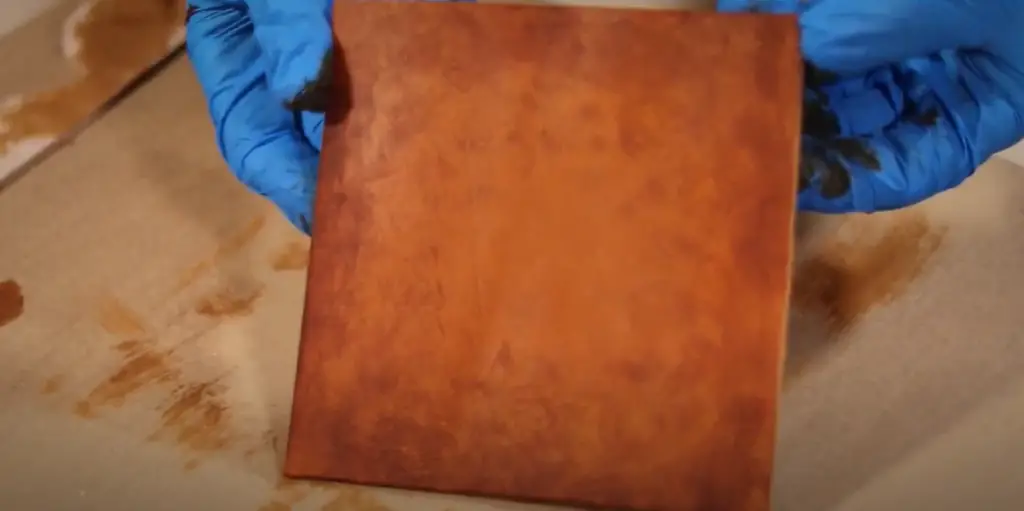
Distressed Leather
Dampen The Leather With Alcohol
To achieve the distinctive appeal of distressed leather, begin by moistening the leather using an alcohol-based solution like rubbing alcohol or vodka. This process not only softens the material but also enhances its ability to absorb dyes more effectively. Once the leather has been adequately dampened, you have the choice of either directly applying the dyes onto the leather surface or delicately dabbing the dye onto the leather using a cloth. These meticulous steps contribute to the creation of a uniquely stylish and characterized distressed leather look.[3]
Give The Leather A Rough Massage
Once the dyes have been carefully applied, take a soft brush and gently massage the leather in a circular motion. By doing so, you will effectively create an intriguing aged-look that beautifully showcases the distressed leather’s unique characteristics. This process not only adds texture and dimension, but also imparts a charmingly worn appearance that exudes a sense of history and individuality. Embrace the art of distressing leather, and watch as it transforms into a piece of timeless beauty.[3]
Rub The Leather With Sandpaper
The final touch for achieving a distressed leather look is to rub the surface with sandpaper. This step not only further enhances the aged appearance, but also adds texture and natural patina to your piece of leather. When it comes to distressing leather, remember that less is often more; use light strokes and a gentle hand so as not to damage the surface of the leather. With some patience and practice, you can create a timelessly stylish distressed look that is entirely your own.
Aging leather is an art form that requires time, patience, and careful attention to detail. By mastering the craftsmanship of distressing leather, you can produce unique pieces of timeless beauty that will last a lifetime. With its individual charm and character, distressed leather is an eye-catching material that adds a rustic yet sophisticated vibe to any interior space.[3]
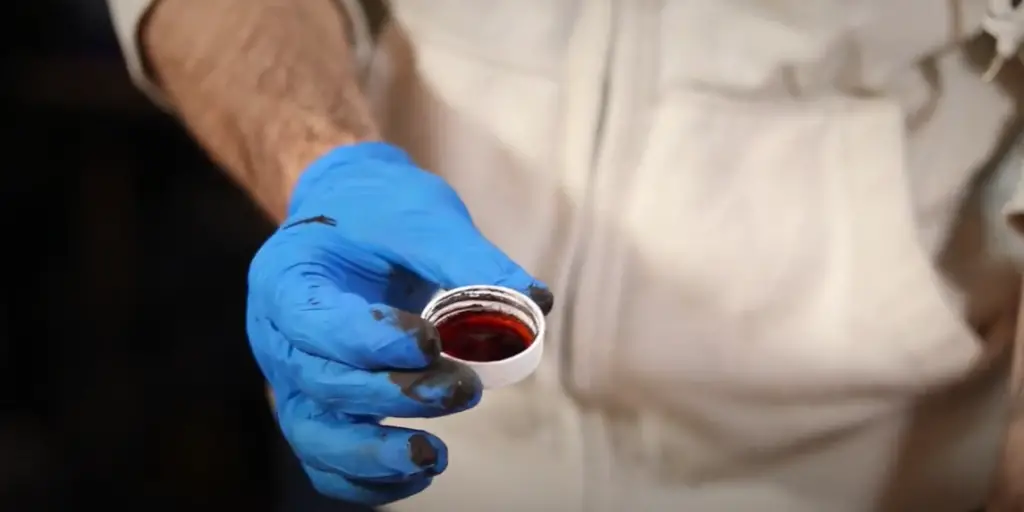
Brush The Leather With A Heavy Bristled Brush
For an extra layer of texture and dimension, finish off your aged leather piece by brushing it with a heavy-bristled brush. This technique works best on thicker pieces of leather such as jackets and bags, as the thick bristles can effectively scrape away small layers of leather to create an alluringly distressed look.
Be sure to use light pressure and maintain a steady rhythm when brushing the leather as too much pressure can damage the material. With some practice, you can achieve a classic aged leather look that is entirely your own.[3]
Give The Leather A Bit Of Dusting
For an extra touch of character and charm, finish off your aged leather piece by giving it a light dusting with a cloth. This will help to remove any excess dye that has been applied during the distressing process, as well as add a subtle sheen to the leather.
It is recommended to use a microfiber cloth for this step, as the material is gentle enough to remove any excess dye without damaging the leather. With a bit of light dusting, you can complete your aged leather piece and create an eye-catching result that will be admired for many years to come.
Aging leather requires time, patience, and practice before achieving optimal results. However, with some extra attention and care, you can create beautiful pieces of timeless beauty that will last a lifetime.[3]
Aging Leather Using the Sun
Aging leather using the sun is a great way to create a unique patina that not only enhances its charm, but also increases its longevity. To ensure your leather goods last a lifetime, start by choosing an area with ample sunlight and low humidity.
Once you have found your ideal location, leave your leather goods untouched for extended periods of time in direct sunlight. This will allow the sun’s UV rays to break down the leather’s surface and create a beautiful aged patina that reflects your individual style and environment.
For those who are looking for an even more personalized patina, you can apply a light coat of oil or wax onto your leather goods before exposing them to direct sunlight. The oils or waxes work to increase the leather’s ability to absorb sunlight and therefore achieve a deeper, richer patina. Be sure to use natural oils such as coconut or tung oil for best results.
By taking advantage of the sun’s natural processes, you can create unique pieces of aged leather that reflect your individual style and environment. With some care and extra attention, you can produce timeless pieces of beauty that last a lifetime.[2]
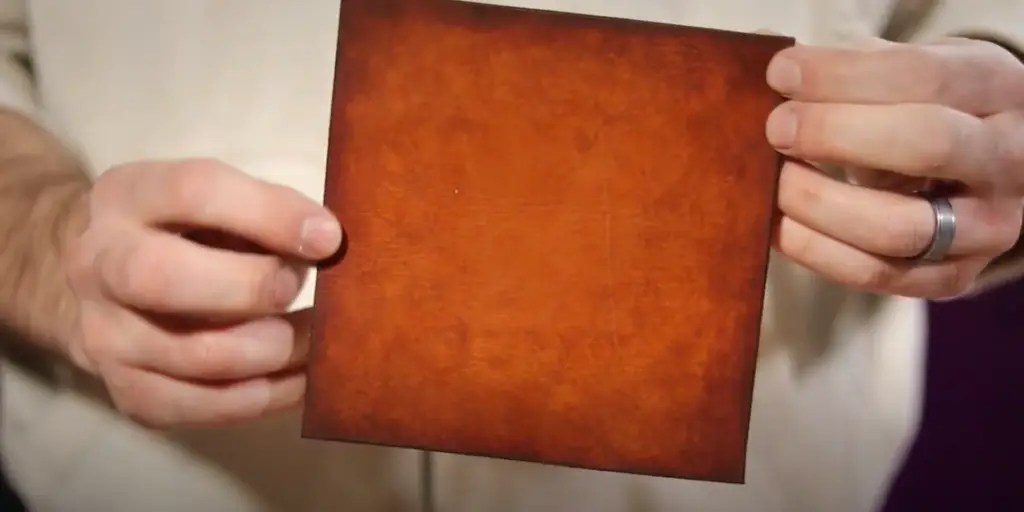
How to Get Better at Aging Leather?
Aging leather is a craftsmanship art that requires patience and practice. To start off, it may be helpful to learn the basics of leather care and distressing techniques, such as dampening the material with alcohol or applying dyes using a cloth.
Once you are familiar with these steps, try experimenting with different methods of aging leather – from exposing the material to direct sunlight, to using sandpaper and heavy-bristled brushes. As you practice the craftsmanship of distressing leather, be sure to take notes on what works best for you – from the type of dyes used, to the amount of pressure applied when massaging or brushing the surface.
Practice makes perfect! With dedication and patience, you can become an expert in aging leather and produce unique pieces of timeless beauty. Remember to keep experimenting and exploring, as each piece will have its own individual charm and character that is entirely your own.[2]
Clearing Up Myths & Misconceptions About Aging Leather
Many people have misconceptions and myths about aging leather. To help clear up any confusion, it is important to first understand the basics of leather care and distressing techniques.
Another misconception is that applying too much pressure when brushing or massaging leather will cause damage. While it is true that excess pressure can harm the material, using light strokes and a gentle hand can create an aged look without causing any damage.[2]
FAQ
How can I patina leather faster?
One way to patina leather faster is to expose it to direct sunlight. This will help speed up the breakdown of the material’s surface, resulting in a beautiful aged patina more quickly. Additionally, applying oils or waxes onto the leather can also increase its ability to absorb sunlight and therefore create a deeper patina faster.
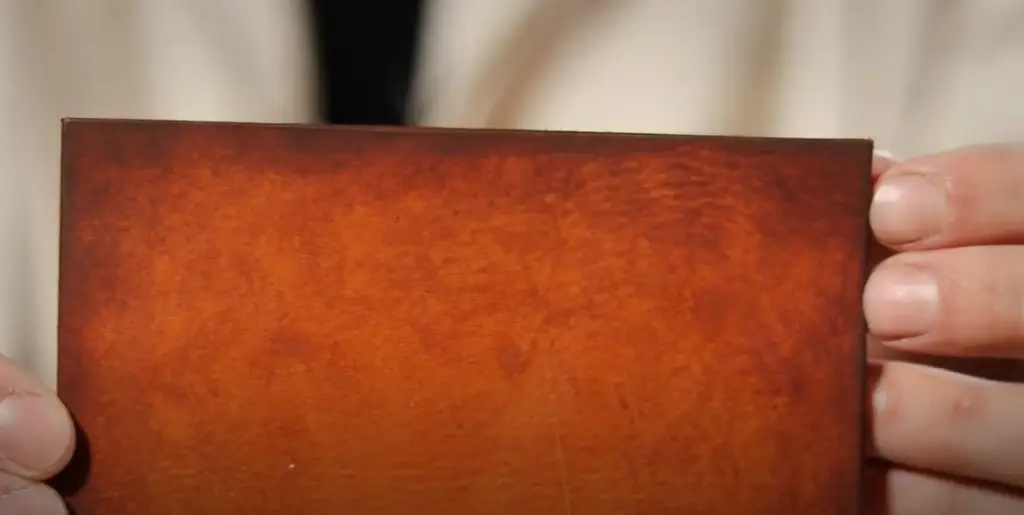
How do you age and darken leather?
Aging and darkening leather can be achieved by applying dyes or pigments onto the material. This will help to create a darker color and add an aged look to the leather. Be sure to use light pressure when massaging or brushing the dye onto the leather, as too much pressure can damage the material.
Can you age new leather quickly?
Aging new leather quickly can be done through a combination of techniques. Applying dyes and pigments onto the leather will help to darken it and give it an aged look. Additionally, exposing the material to direct sunlight or rubbing it with sandpaper can also speed up the process of aging. With some practice and patience, you can achieve beautiful results in a relatively short amount of time.
How can I darken leather naturally?
Darkening leather naturally can be done using natural oils, such as tung oil or coconut oil. Simply apply a light coat of the oil onto the material before exposing it to direct sunlight. This will help to increase its ability to absorb UV rays and therefore create a deeper patina naturally. Be sure to use only natural oils for best results!
Does leather look better with age?
Yes, leather looks better with age! As it ages, the material’s color and texture can become more beautiful. Additionally, exposing the leather to direct sunlight can help to create a unique patina that reflects your individual style and environment. With some care and attention, you can create timeless pieces of beauty that will last a lifetime.
Does water age leather?
Yes, water can age leather. Dampening the material with water can help to soften it and make it more pliable for distressing techniques. However, be sure to only use small amounts of water – too much moisture may cause the leather to shrink or warp. Additionally, you should always allow the piece to dry completely before exposing it to direct sunlight or any other form of heat.
Can leather last 100 years?
Yes, leather can last up to 100 years or more! With proper care and maintenance, it is possible for leather items to retain their beauty and quality for many decades. Be sure to clean the material regularly with a soft cloth and gentle cleansers, as well as use natural oils or waxes to protect against dirt and moisture. Additionally, avoiding direct sunlight and other sources of heat can also help extend its lifespan.
Does sunlight age leather?
Yes, sunlight can age leather. By exposing the material to direct UV rays, you can create a unique patina and prevent it from fading over time. However, be sure not to overexpose the material as too much sunlight can cause it to warp or shrink. Additionally, if possible, you should also use natural oils or waxes on the surface of the leather to protect it from further damage.
Does UV destroy leather?
Yes, UV rays from the sun can damage leather over time. To avoid this, be sure to protect your leather items against direct sunlight by using natural oils or waxes. Additionally, you should also avoid exposing the material to other sources of heat – such as radiators or open flames – as these can also cause it to degrade more quickly. With proper care and maintenance, you can help extend the life of your leather items and ensure they remain beautiful for years to come.
Does UV light darken leather?
Yes, UV rays from the sun can darken leather over time. By exposing the material to direct sunlight, you can create a unique patina and give it a deeper color. However, be sure not to overexpose the material as too much exposure can cause it to warp or shrink. Additionally, if possible, you should also use natural oils or waxes on the surface of the leather before exposing it to sunlight. This will help to prevent further damage and ensure the material remains beautiful for years to come.
Useful Video: Age Leather | Simple Leather Dye Technique!
Conclusion
Aging and darkening leather can be done in a variety of ways, from applying dyes and pigments to exposing it to direct sunlight. However, it is important that you take the necessary steps to protect your material from harm. Be sure to use light pressure when brushing or massaging the leather, as too much pressure can damage the material. Additionally, natural oils or waxes can help to protect the material from dirt and moisture, as well as extend its lifespan. With some practice and patience, you can create beautiful aged leather pieces that will last a lifetime.
References:
- https://steelhorseleather.com/blogs/the-journal/age-leather
- https://steelhorseleather.com/blogs/the-journal/age-leather
- https://www.libertyleathergoods.com/how-to-age-leather/

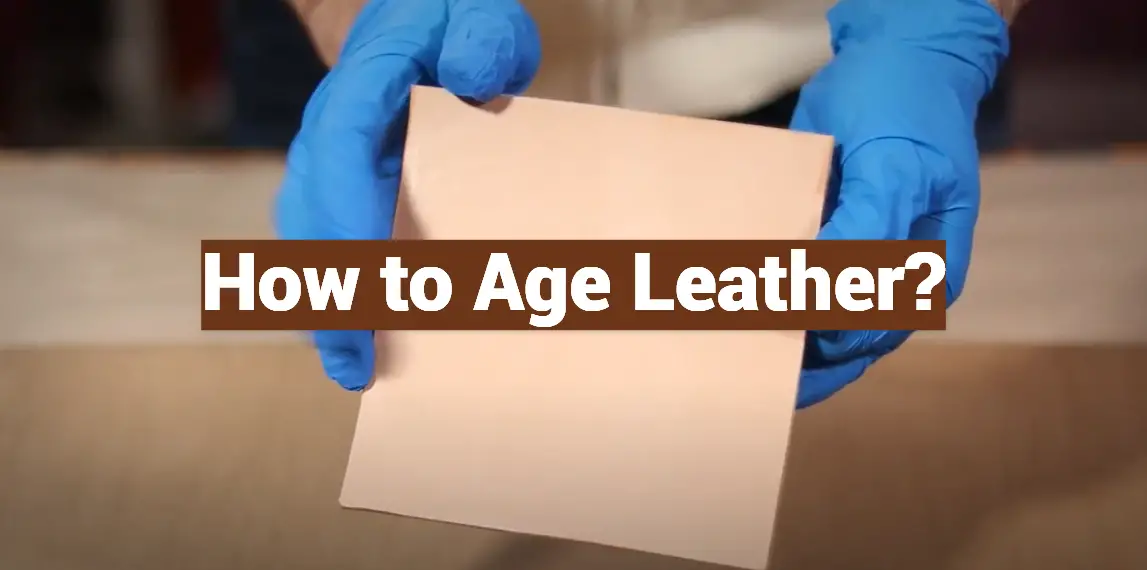

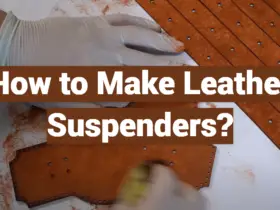

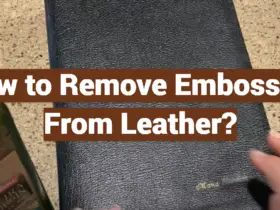

Leave a Reply